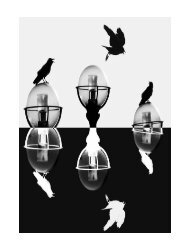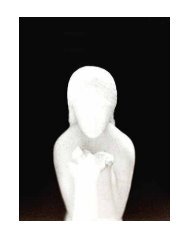Odds and Ends Essays, Blogs, Internet Discussions, Interviews and Miscellany
Collected essays, blogs, internet discussions, interviews and miscellany, from 2005 - 2020
Collected essays, blogs, internet discussions, interviews and miscellany, from 2005 - 2020
Create successful ePaper yourself
Turn your PDF publications into a flip-book with our unique Google optimized e-Paper software.
sought to project their own experiences, in sparkling bursts of voluble utterance. Their models, among
older authors, were Emily Dickinson, John Berryman, John Ashbery, perhaps Frank O’Hara; some had
studied (or studied with) Jorie Graham, and many had picked up devices from the Language writers of
the West Coast. These poets were what I, eleven years ago, called “elliptical”, what other (sometimes
hostile) observers called “New Lyric”, or “post-avant”, or “Third Way”. Their emblematic first book was
Mark Levine’s Debt (1993), their emblematic magazine probably Fence (founded 1998); their bad
poems were bad surrealism, random-seeming improvisations, or comic turns hoping only to hold an
audience.
He then sees a move away from this sort of poetry to that typified by (among others) Devin Johnston, Jon Woodward
and Alice James. He describes this as follows:
The poets of the New Thing observe scenes and people (not only, but also, themselves) with a selfsubordinating
concision, so much so that the term “minimalism” comes up in discussions of their work,
though the false analogies to earlier movements can make the term misleading. The poets of the New
Thing eschew sarcasm and tread lightly with ironies, and when they seem hard to pin down, it is
because they leave space for interpretations to fit. Woodward’s Rain, with its five-word lines and fiveline
elegiac stanzas, makes a good example:
the slick
of rainwater converts each thing’s
outside to an image of
inside the only object without
a soul is the sun
So says one stanza; six pages on, another reads:
the tar they use to
fill the cracks shines orange
from the orange streetlights but
is blacker than the asphalt
which doesn’t shine
We may have to reread to see, amid these scenes, the grief (for Woodward’s dead friend Patrick) that
guides the whole book.
My apologies for being obtuse but how does this sort of poetry exemplify anything new? Granted, in contrast to the
poetry that Burt sees as non-descriptive and elliptical it is different. Nevertheless, it is not historically new in the
development of poetic writing since High Modernism. On the contrary, it seems merely to represent a style of poetic
writing that has always been active in mainstream poetry, namely that which has always relied on an empiricist
aesthetic in describing phenomena. Indeed, Burt seems to acknowledge this:
This turn among poets to reference, to concrete, real things, has parallels, if not contributory causes, in
literary academia. By 2001 there were books, articles, and anthologies devoted to “thing theory”,
showing how literary works depend on the structures and histories of the “solid objects” (Douglas
Mao’s term) that they might depict.
Therefore, it is curious that Burt sees this as novel. He adds:
Reference, brevity, self-restraint, attention outside the self, material objects as models, Williams and his
heirs as predecessors, classical lyric and epigram as precedents: all these, together, constitute the New
Thing.
This statement could have been made at any point in history about mainstream empiricist poetry. By the way, some
of what I say in my article ‘Empirical and Non-Empirical Identifiers’ in Jacket magazine, may inform any discussion
this blog entry fosters.
60




